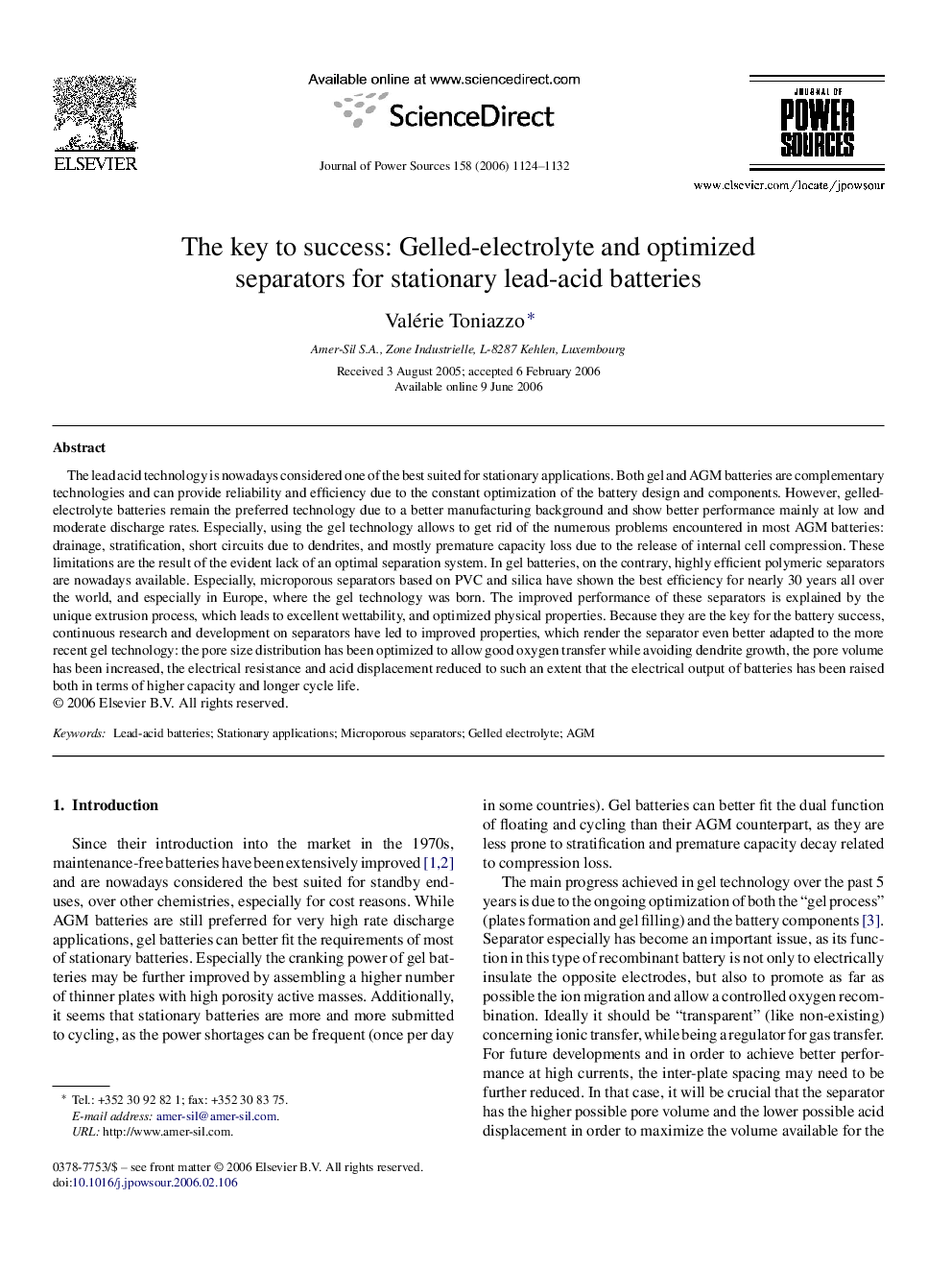| Article ID | Journal | Published Year | Pages | File Type |
|---|---|---|---|---|
| 1287382 | Journal of Power Sources | 2006 | 9 Pages |
The lead acid technology is nowadays considered one of the best suited for stationary applications. Both gel and AGM batteries are complementary technologies and can provide reliability and efficiency due to the constant optimization of the battery design and components. However, gelled-electrolyte batteries remain the preferred technology due to a better manufacturing background and show better performance mainly at low and moderate discharge rates. Especially, using the gel technology allows to get rid of the numerous problems encountered in most AGM batteries: drainage, stratification, short circuits due to dendrites, and mostly premature capacity loss due to the release of internal cell compression. These limitations are the result of the evident lack of an optimal separation system. In gel batteries, on the contrary, highly efficient polymeric separators are nowadays available. Especially, microporous separators based on PVC and silica have shown the best efficiency for nearly 30 years all over the world, and especially in Europe, where the gel technology was born. The improved performance of these separators is explained by the unique extrusion process, which leads to excellent wettability, and optimized physical properties. Because they are the key for the battery success, continuous research and development on separators have led to improved properties, which render the separator even better adapted to the more recent gel technology: the pore size distribution has been optimized to allow good oxygen transfer while avoiding dendrite growth, the pore volume has been increased, the electrical resistance and acid displacement reduced to such an extent that the electrical output of batteries has been raised both in terms of higher capacity and longer cycle life.
